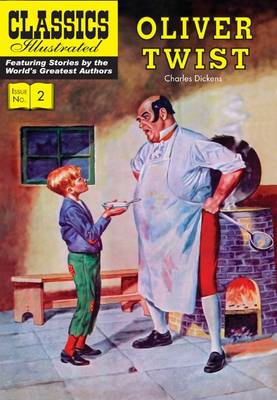
Such boys were called apprentices but in actuality had oftentimes been sold into slavery by their impoverished or drunken parents. Small boys were sought out by sweeps because they were small enough to be lowered into chimneys to brush away the soot. Oliver is justified in being terrified to be apprenticed to Mr Gamfield the chimney sweep. If that's the eye of the law, the law is a bachelor and the worst I wish the law is, that his eye may be opened by experience-by experience" ( Oliver Twist, p. Bumble, squeezing his hat emphatically in both hands, "the law is a ass - a idiot. When Mr Bumble tries to pass the guilt of the stolen locket and ring off on his wife, Mr Brownlow informs him that in the eyes of the law Bumble was the more guilty of the two because the law assumes that his wife operated under his direction.īumble's reply, one of the most quoted lines in all of Dickens, implies that any married man knows that he has no such control over the actions of his wife. Because they were mobile and traveled all over England, they were much more effective at catching criminals than the stationary London Watch ( Wikipedia). The Bow Street Runners earned their income through rewards and private fees and gained much of their information through the use of informers. This group operated as London's police force from 1750 until they were incorporated into Sir Robert Peel's Metropolitan Police in 1829.

516-517).įrom Fagin to Riah: How Charles Dickens looked at the Jews By Herb Moskovitzīlathers and Duff, who responded to the attempted robbery of the Maylie home, were officers in the famous Bow Street Runners.

Dickens also, when editing Oliver Twist for the Charles Dickens edition of his works, eliminated most references to Fagin as "the Jew" ( Slater, 2009, p. In his novel, Our Mutual Friend, Dickens created Riah, a positive Jewish character. Later, when Dickens sold his London residence, Tavistock House, to a Jewish couple, whom he befriended, he was compelled to make restitution. Dickens expressed surprise when the Jewish community complained about the stereotypical depiction of Fagin. The children in the Oliver Twist illustrations look like miniature adults without the defining characteristics of children, such as the disproportionately large head and soft features which make a child look like a child.Your browser does not support JavaScript!Īnti-Semitism, ingrained into English society at the time Oliver Twist was written (1837), manifest itself in Charles Dickens' depiction of Fagin. Note: It has been noted that Cruikshank could not draw pretty woman, it also appears that he had trouble drawing children. George Cruikshank supplied all 24 illustrations for Oliver Twist originally published in monthly parts from February 1837 to April 1839. Oliver Twist Illustrations Illustrations by George Cruikshank

Illustrations > Oliver Twist Illustrations


 0 kommentar(er)
0 kommentar(er)
